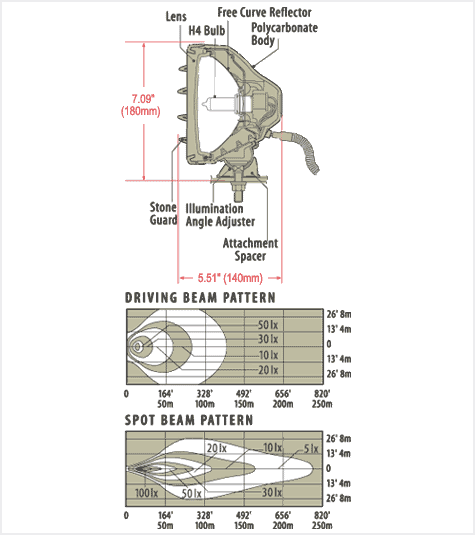rockethound wrote:Legality is a variable that everyone must check out on their own to be sure, what is legal in one state/province may or may not be legal in another.
EVERY HID bulb mounted to a halogen base is illegal
everywhere in the Europe, the US, and Canada for very good reason.
I just went over this on the USMB, here are the cliff notes:
The HID arc is in a different location and orientation than the filament in a halogen bulb. This means that the light goes a lot of places it should not go, regardless of how the headlights are aimed.
An HID arc puts out 3x more light than a halogen bulb. Not having all that light reflected/projected exactly where it should go, and nowhere else, is a very, very, very bad thing, for yourself and other cars.
Further reading:
http://www.danielsternlighting.com/tech ... sions.html
http://www.nhtsa.dot.gov/cars/rules/int ... z.ztv.html
The National Highway Traffic Safety Administration (NHTSA) is targeting high-intensity discharge (HID) conversion kits for enforcement actions. NHTSA has concluded that it is impossible to produce HID conversion kits (converting a halogen system to HID) that would be compliant with the federal lighting standard, Federal Motor Vehicle Safety Standard (FMVSS) No. 108. The noncompliant kits frequently include a HID bulb, a ballast, an igniter, a relay and wiring harness adapters. The NHTSA believes this equipment presents a safety risk to the public since the kits can be expected to produce excessive glare to oncoming motorists. In one investigation, the NHTSA found that an HID conversion headlamp exceeded the maximum allowable candlepower by over 800%.
Under FMVSS No. 108 Section S7.7 (replaceable light sources), each replaceable light source for headlamps must be designed to conform to the dimensions and electrical specifications for the headlamp source it is intended to replace. For example, if an HID kit is marketed as replacing an H1 light source, then it must match the H1's wire coil filament size and location, the electrical connector size and location and the ballast design for use with an H1 light source (which is impossible since there is no ballast). Consequently, companies that are manufacturing HID light sources (e.g., D1S, D1R, D2S, D2R, 9500, etc…) with incandescent light source bases (e.g., H1, H3, H7, H8, H9, H11, H13, HB1, HB2, HB3, HB4, HB5, etc…) should be aware that this light source design would not be one that conforms to FMVSS No. 108, and could not be imported and sold in the United States without violating Federal law. (The importer is treated as the manufacturer and subject to the same fines and penalties that apply to a domestic manufacturer.)
NHTSA has also determined that a commonly used disclaimer "for off-road use only" has no legal meaning and is not recognized by the agency as the manufacturer, importer and retailer are not in a position to control use once a product has been sold. Any equipment offered for sale which is covered by FMVSS No. 108 (headlamps, taillamps, side markers, etc.) must comply with the standard.











